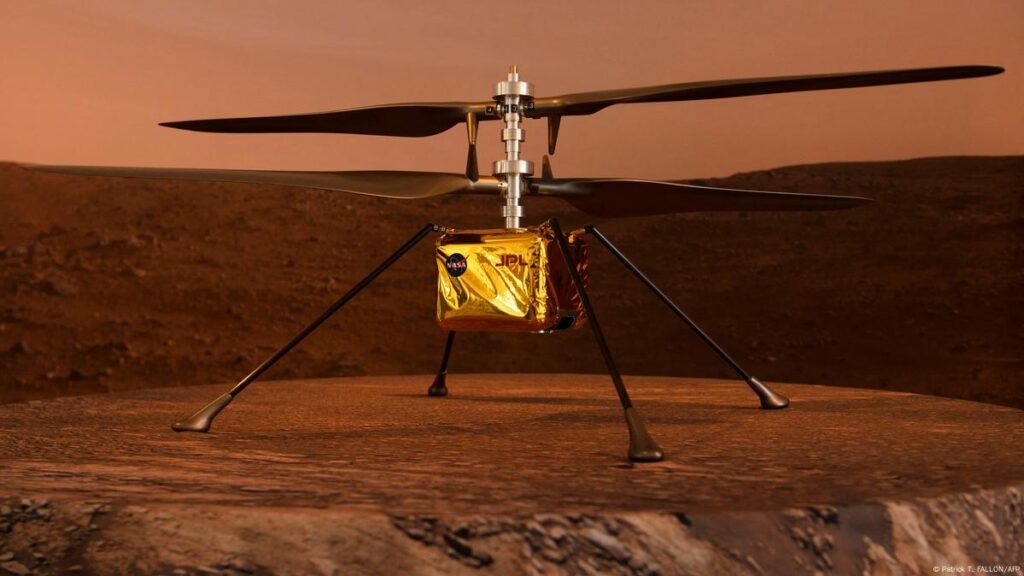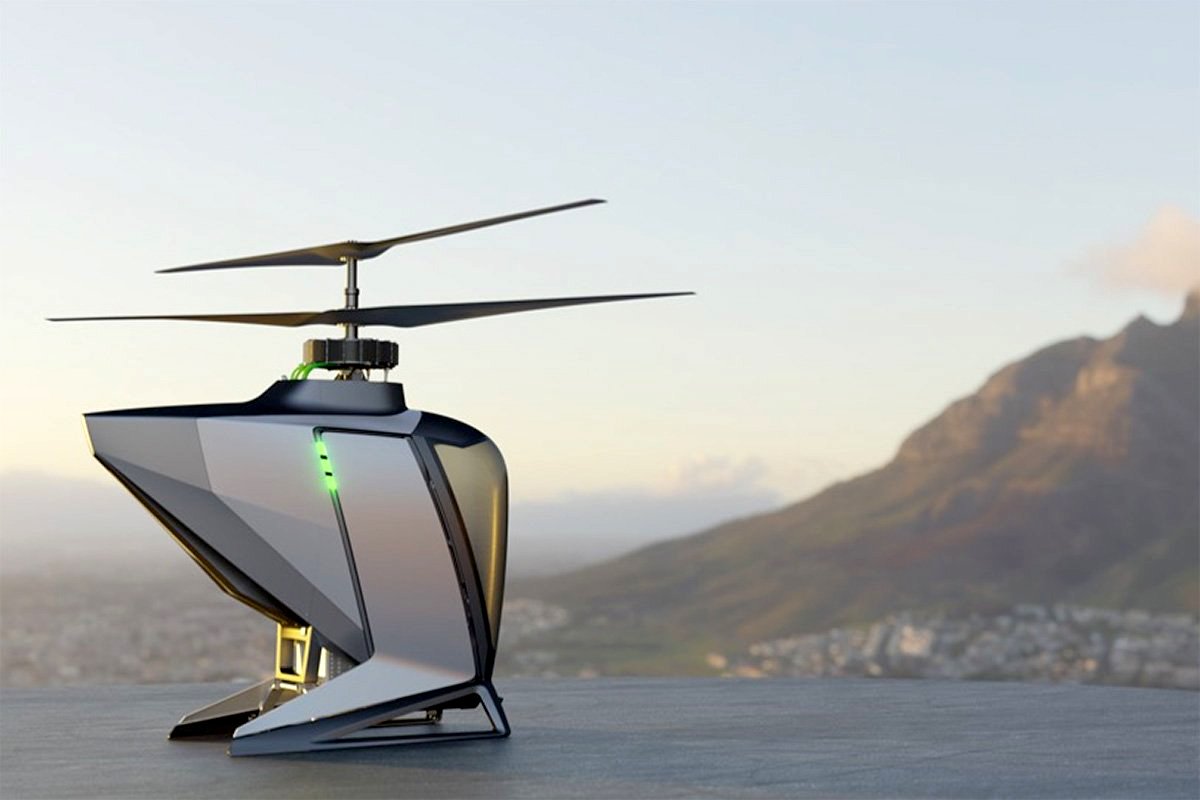The Ecopter from FlyNow is a perfect example of a refreshingly straightforward flying machine with remarkable capabilities.
A New Kind of eVTOL
Unlike conventional air taxis with multiple tilting rotors and fixed wings, the Ecopter follows a minimalist approach. Yet, it boasts an impressive range of 31 miles (50 km) with an additional 25 miles in reserve and cruises comfortably at 130 km/h (81 mph). This is exceptional for an eVTOL that doesn’t rely on wings for lift.
For context, consider the Volocopter—another rotor-based eVTOL. It offers nearly half the range at just 17 miles (27 km) and a significantly lower top speed of 70 km/h (43 mph). So what’s FlyNow’s secret sauce?
Inspired by NASA’s Mars Ingenuity
The Ecopter’s performance owes much to NASA’s Ingenuity, the first aircraft to achieve powered, controlled flight on another planet. Ingenuity uses a simple yet highly efficient single counter-rotating coaxial rotor system, eliminating the need for a tail rotor and reducing power consumption dramatically.

Despite Mars’ extremely thin atmosphere—just 2% the density of Earth’s—Ingenuity, weighing a mere 1.8 kg, surpassed expectations by reaching altitudes of 24 meters over 72 successful flights. This rotor system requires up to 55% less power than multi-rotor configurations, explaining why Ecopter can outperform other eVTOLs without complex wing structures.
Engineering Breakdown: Why the Ecopter Excels
Rotor Design:
The Ecopter features a 3-meter diameter rotor system. The aircraft weighs just 240 kg empty and can carry a 120 kg payload in its single-seater version. With a disc loading of just 52 kg/m², it has the lowest disc loading among current eVTOLs.
Safety First:
With no autorotation capability, the Ecopter employs redundancy through eight electric motors—four per rotor—allowing safe landings even after multiple motor failures.
Simplified Control System:
Instead of traditional swashplate assemblies, the Ecopter achieves directional control via differential RPM of the motors. The entire rotor assembly tilts for thrust vectoring, reducing mechanical complexity while enhancing maneuverability.
Whisper-Quiet Operations:
Operating at just 55 decibels from 150 meters—about as loud as a typical dishwasher—the Ecopter is designed to blend into urban environments without disturbing the peace.
Smarter Certification Pathway
Certification is often the biggest hurdle for eVTOL developers. FlyNow has cleverly navigated this:
- Automatic, Not Autonomous Flight: The Ecopter operates along predefined routes with an active collision-avoidance system, easing concerns of regulatory authorities.
- Proven Certification Standards: It qualifies under existing rotorcraft regulations, unlike tiltrotor eVTOLs, whose certification standards are still evolving—potentially fast-tracking its approval process.
Ready for Riyadh EXPO 2030
With these advantages, Saudi Arabia has chosen the Ecopter to be featured at the Riyadh EXPO 2030, where hundreds of units will be used for personnel transport.
The Future Lineup
FlyNow’s production roadmap includes:
- Single-Seater – Optimized for individual urban mobility.
- Two-Seater – Ideal for short-range passenger transport.
- Cargo Version – Capable of carrying standard Euro-pallets (800 × 1200 mm) up to 1 meter tall and 200 kg payload, with mass production starting in 2027 and a target of 3,000 units.
The Ecopter stands out as a no-nonsense, efficient solution in a sea of over-engineered eVTOL concepts—proof that sometimes, simplicity truly soars.
